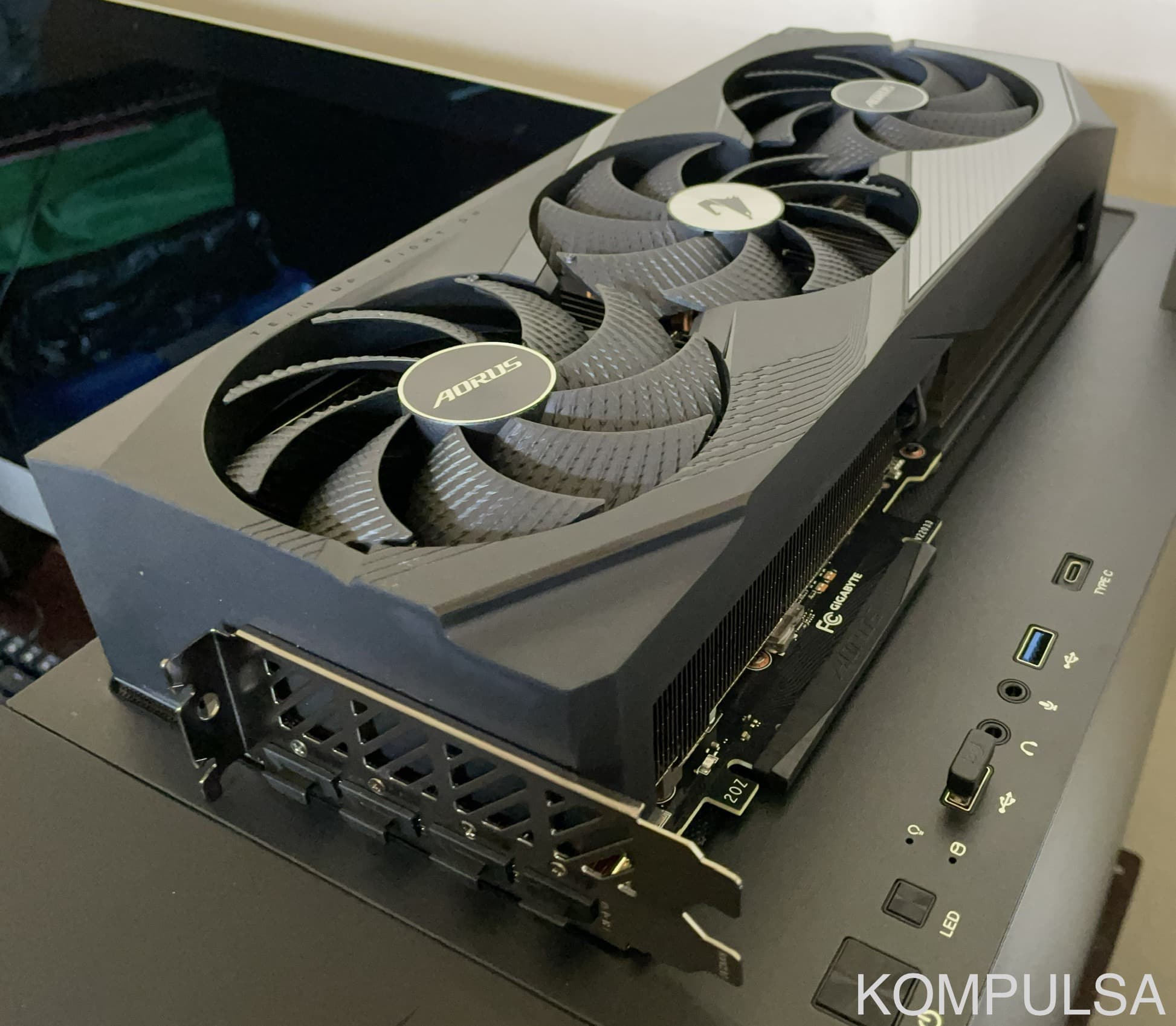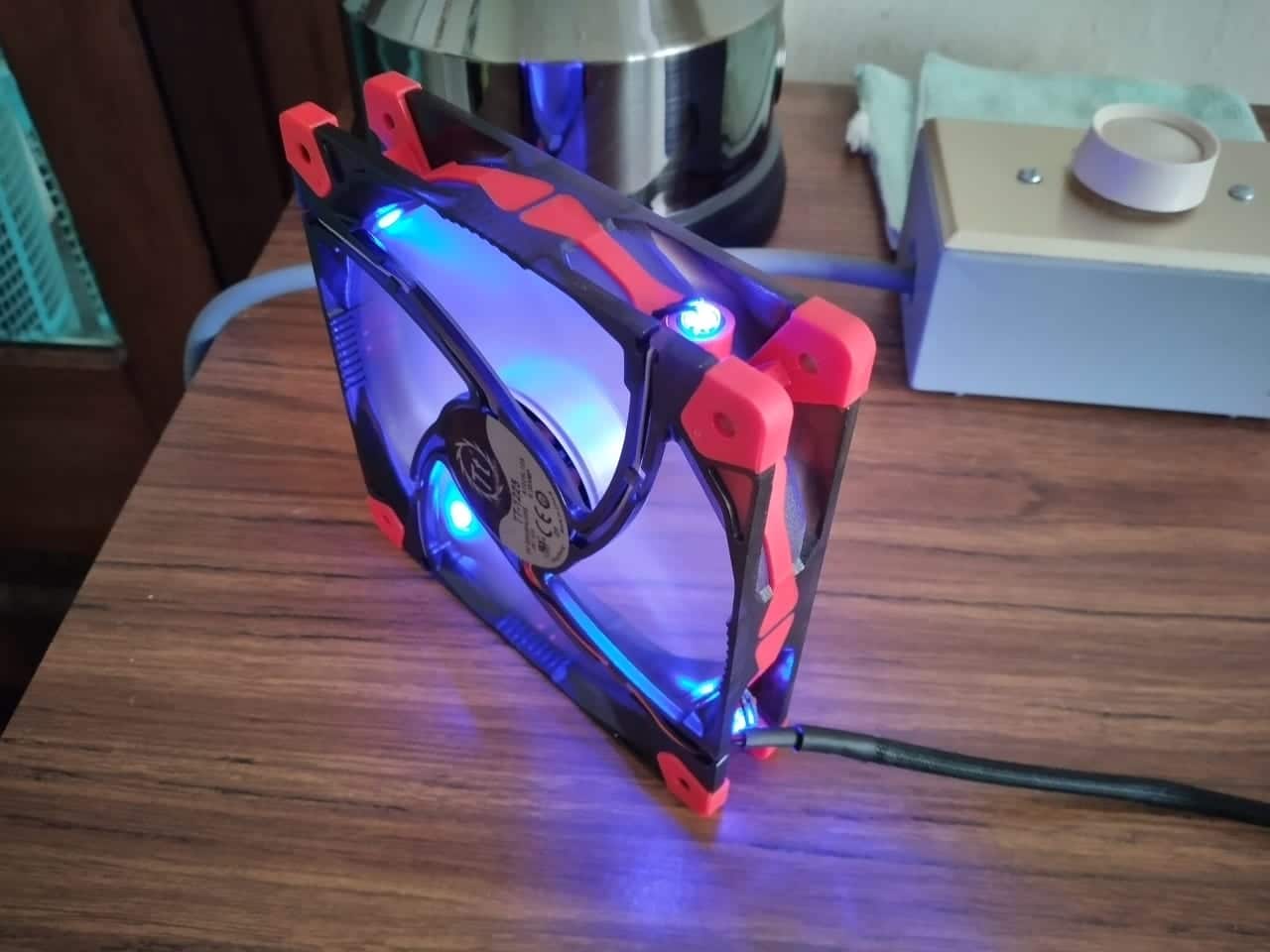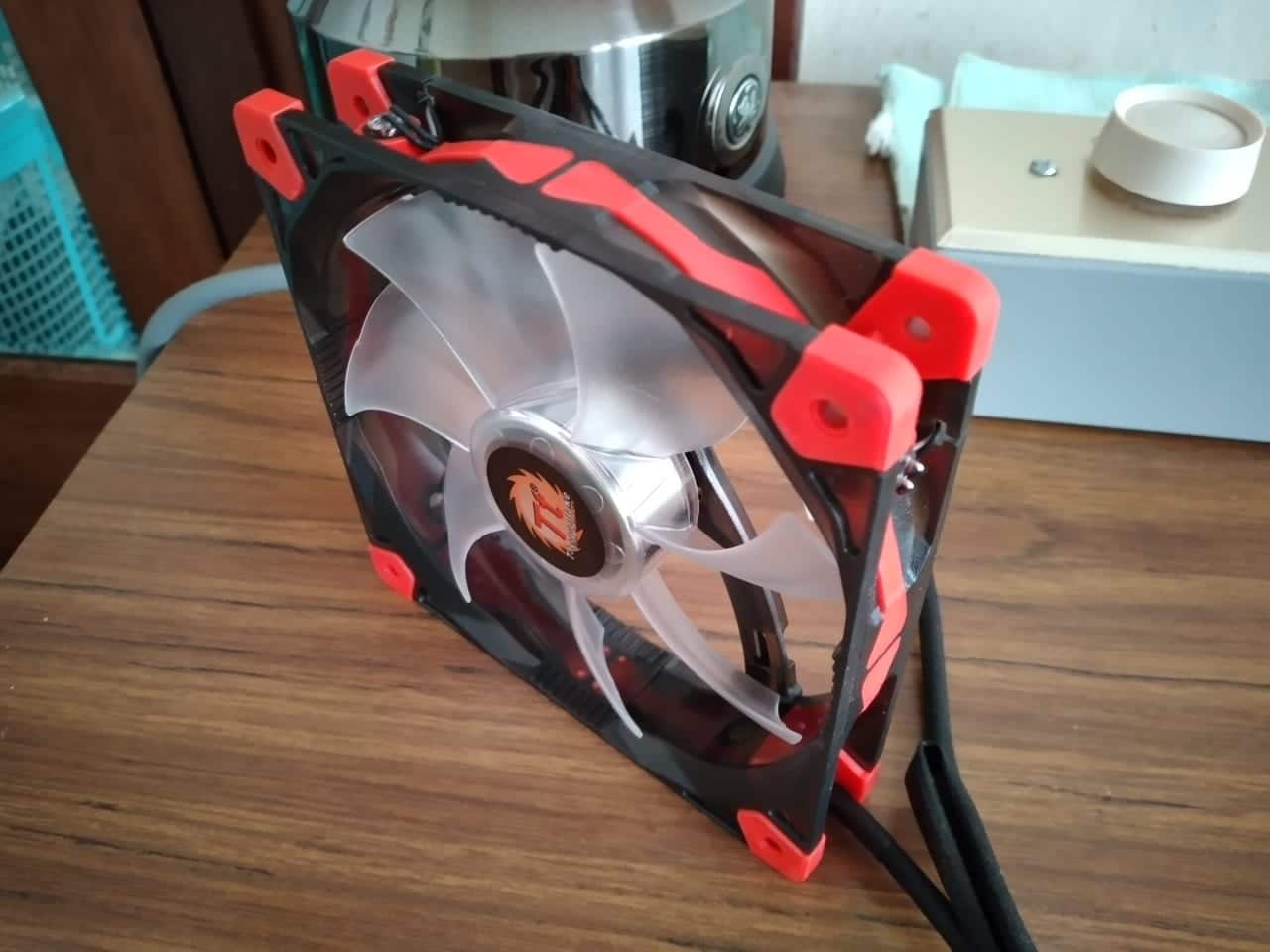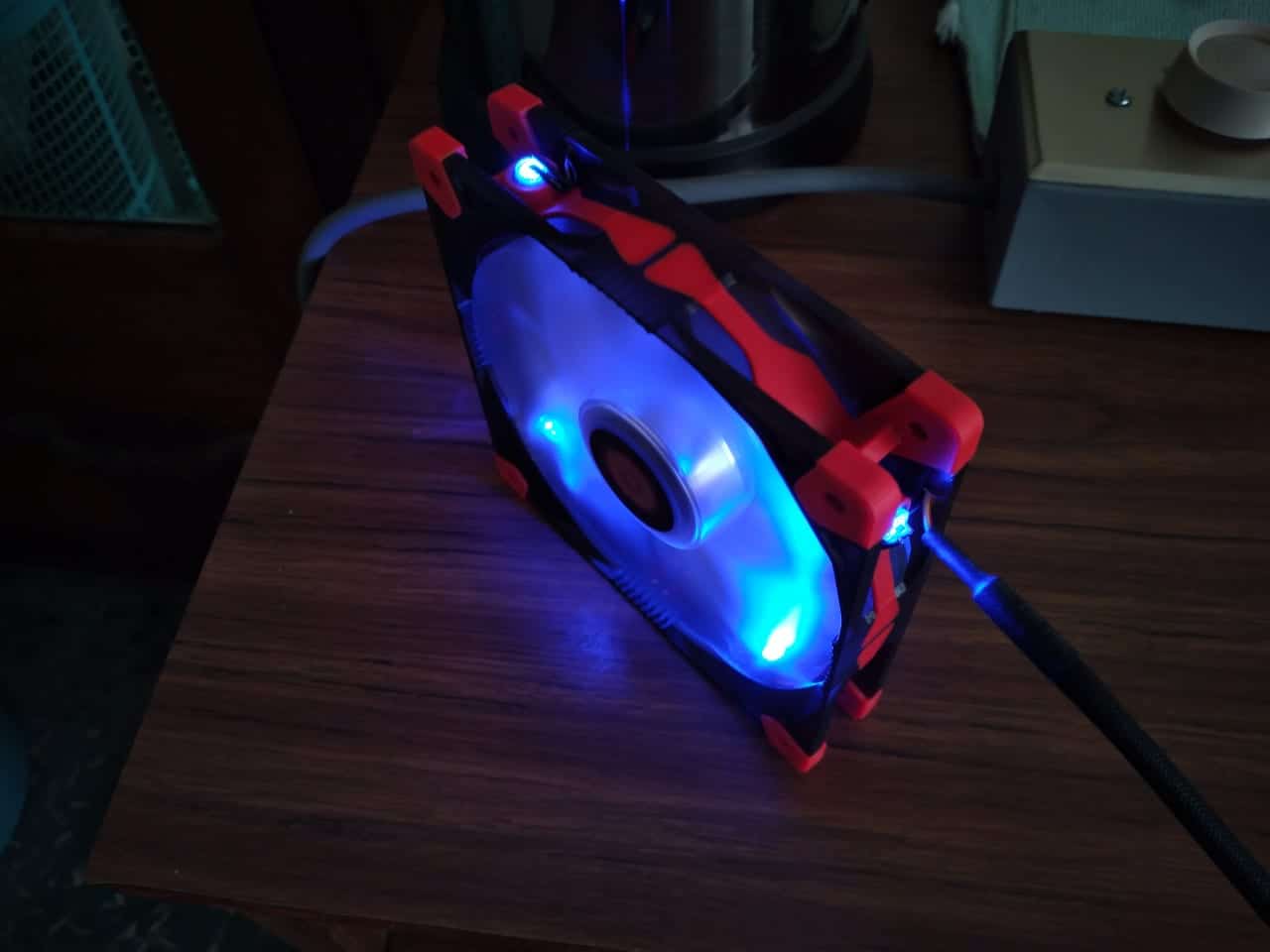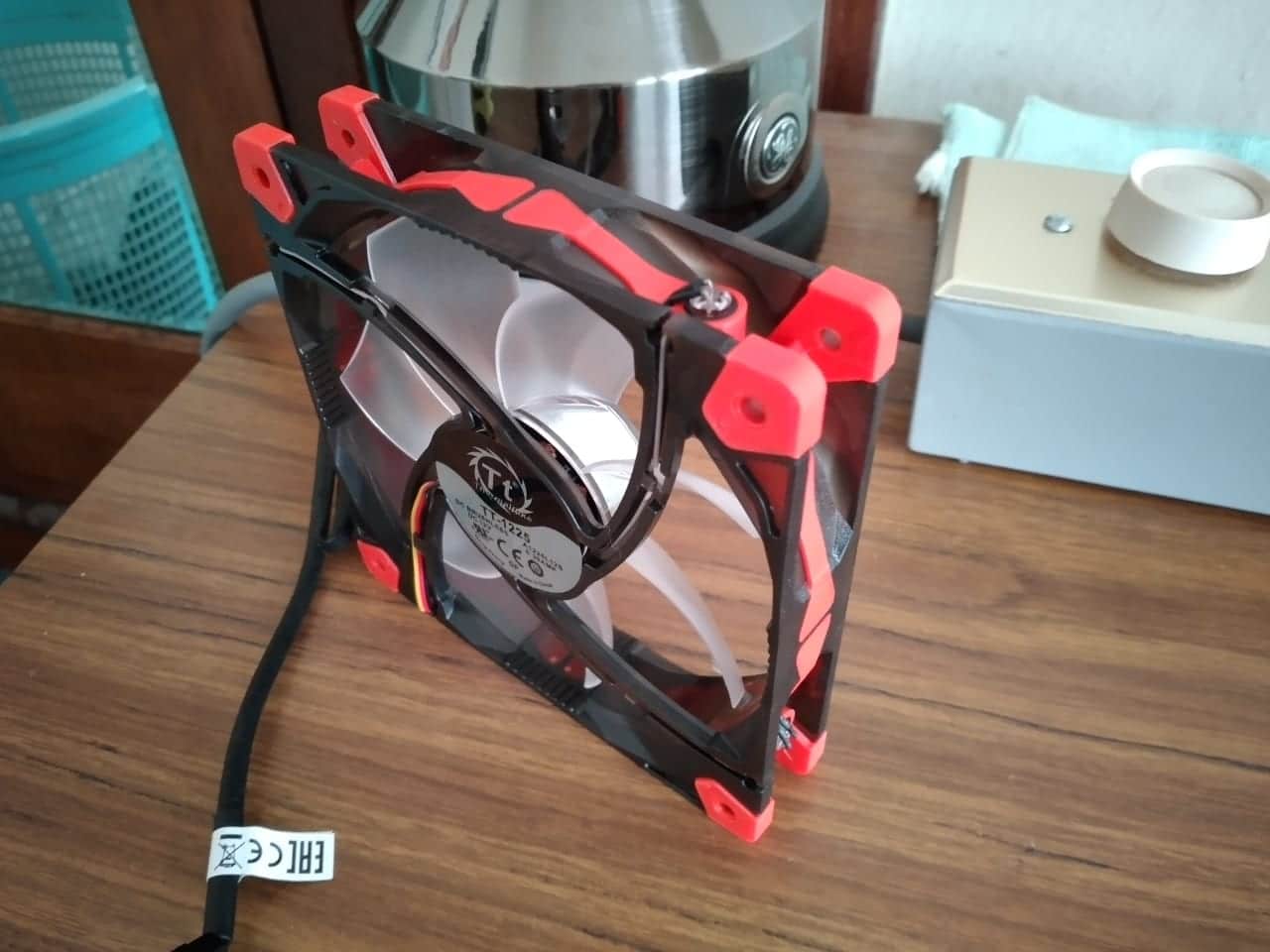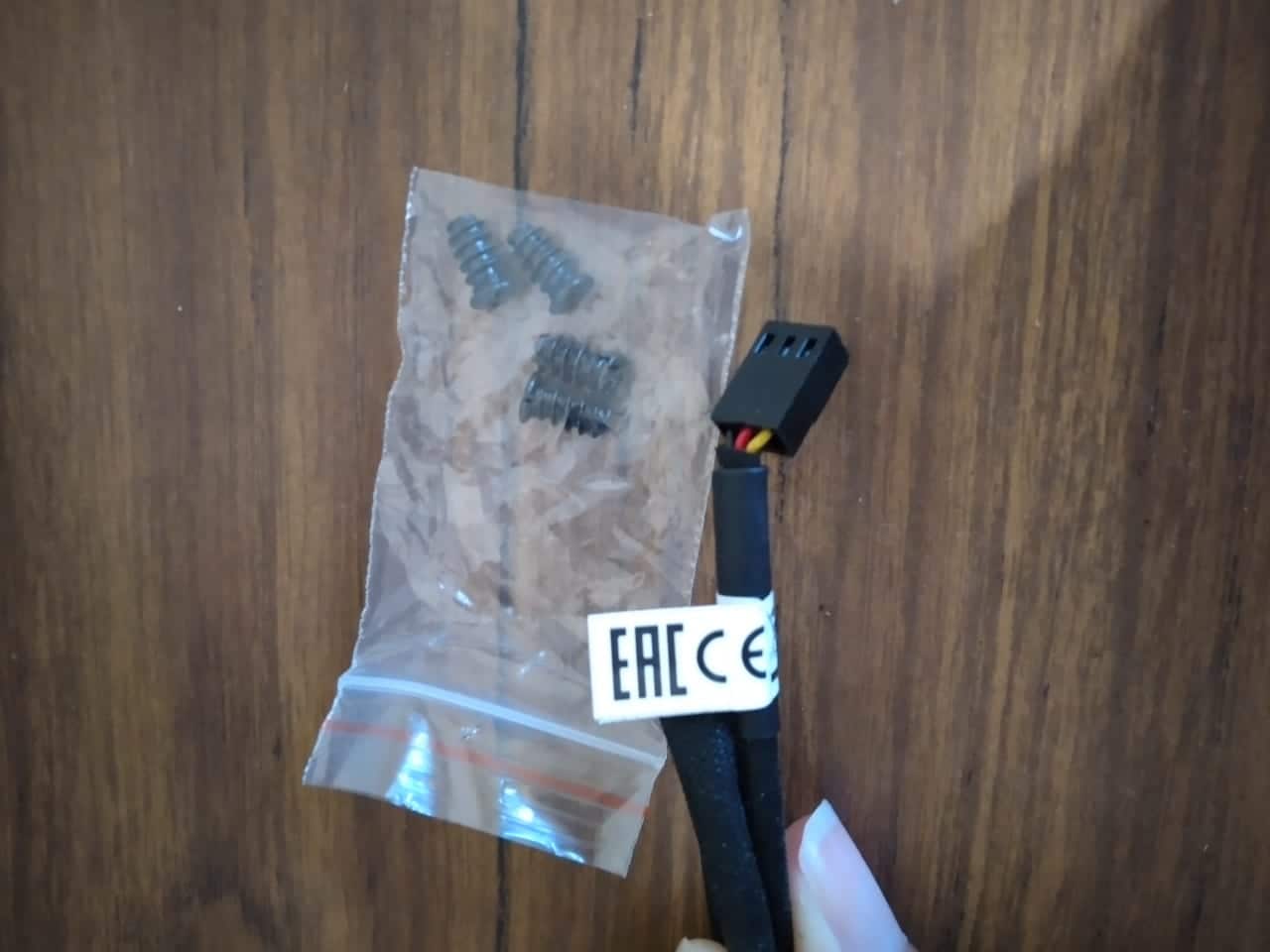The Thermaltake Luna 12 is a 120mm (4.7-inch) axial case fan for PCs. It is twice the size of many of the case fans you’ll see in a typical microATX PC. However, that results in a greater airflow-to-noise ratio (or greater airflow-to-audible noise ratio). At its maximum speed, the Luna 12’s noise level was barely noticeable. The lower-frequency noise of fans in the lower RPM ranges is easier on the ears.
The Luna 12 has hydraulic bearings. It is also a fairly efficient case fan with a power consumption of 3.6 Watts (12 Volts at 0.3 Amps) and a reasonable airflow rating of 50.4 CFM (not to be confused with the ‘Slim’ version of this fan, which is 27.5 CFM and consumes 1.92 Watts). The LED-backlit translucent fan comes in three different LED colours: Blue, red, and white. However, all of them have the same frame colours (black and red).
Credit for gallery images: Nicholas Brown/Kompulsa.
Fan Mounting And Power Connectors
Thermaltake touts the Luna 12’s rubberized corners and screw holes that reduce the amount of vibration that enters the case (thereby reducing noise levels). They worked fairly well, although i’m not sure why they had to be red (I would expect them to be blue on the blue version of the fan, red for the red version, etc). Despite that, it is still a beautiful fan.
This case fan is shipped with a standard 3-pin connector that fits most motherboards, and it includes a Molex converter so that you can plug it directly into your power supply (although you won’t get the speed control offered by your motherboard, if any). Surprisingly, the fan was still quiet even at full speed, and almost inaudible at lower speeds. That’s ideal for the gaming PC market that it was (most likely) built for.
A Quick Note About Blowers Vs Axial Fans
Conventional desktop case fans that blow air out perpendicular to the hub are called axial fans (like the Luna 12). Blowers (also called centrifugal fans) are moderate pressure fans that spin air outwards from the center of the fan (the hub), or sideways from the hub (referred to as centrifugal force). The differences between the two types of fans is substantial, and it is important. To put it as simply as possible:
Blowers generate a higher pressure (these are high static pressure fans) and axial fans generate a lower pressure. Generating that additional pressure requires more power, resulting in a higher wattage for blowers.
- Axial fans are vastly more energy-efficient and effective, assuming there are no airflow obstructions such as filters, ducts, or constricted areas such as laptops and all-in-one PCs.
- Axial fans are also significantly quieter if the criteria above are met (no airflow obstructions).
- If there are airflow obstructions such as HEPA filters (or thick carbon filters), axial fans perform horribly compared to blowers. This is where blowers not only shine, but are absolutely necessary. This is why laptops virtually always (if not always) use blowers. Air has to be forced through them.
- Under the circumstance of an airflow obstruction (the best example is a thick air filter or thin all-in-one PC design), blowers are far more energy-efficient — as axial fans would be unable to generate much airflow. The obstructions mentioned are high static pressure applications.
Neither blowers or axial fans are better than each other. They each serve their own purpose, and both will perform horribly if used for purposes other than they were intended. The Thermaltake Luna 12 series fans typically sell for $10 to $15 (anything above that is an excessive markup, unless it’s caused by your country’s import fees).

